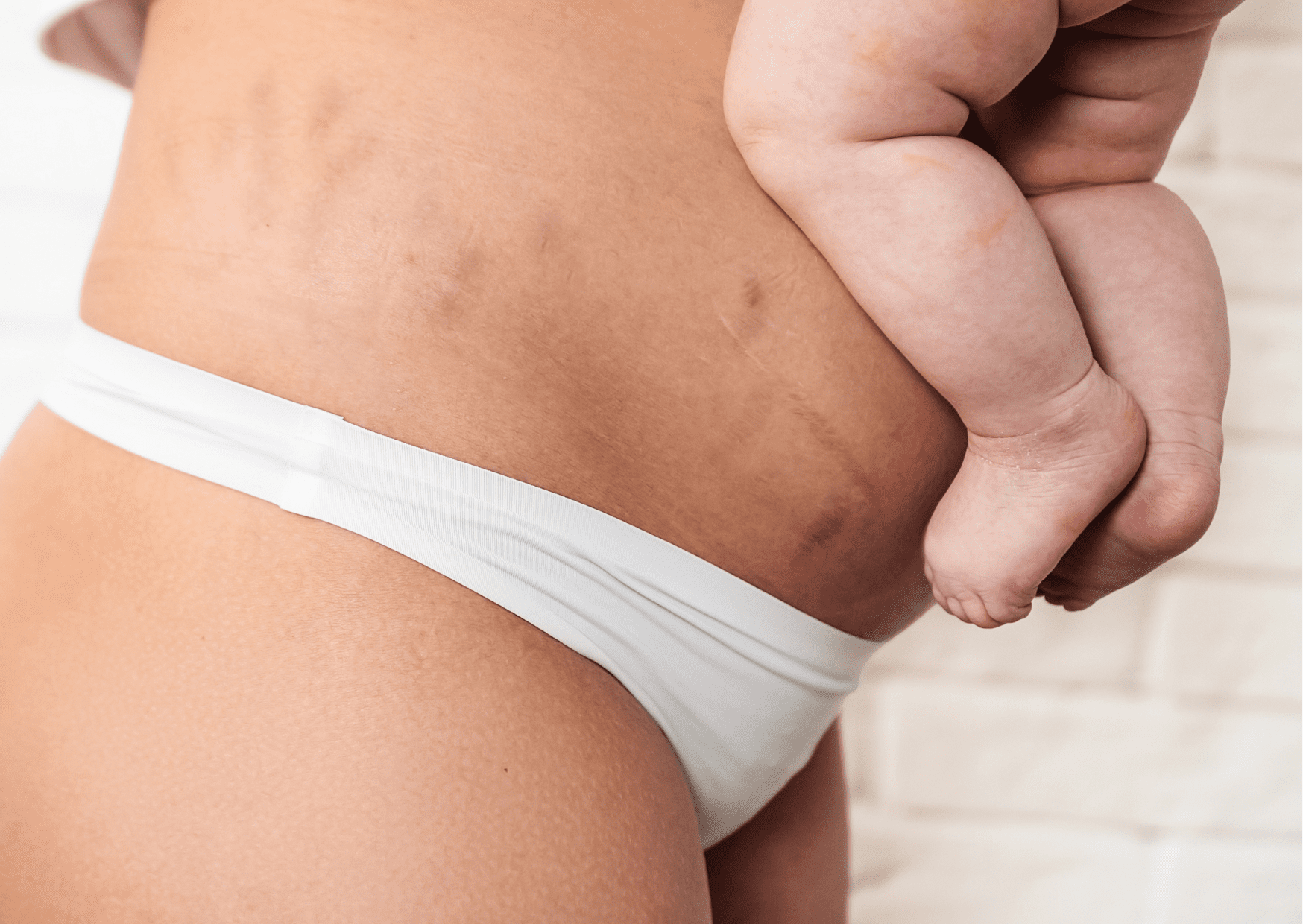6 Tips for the first 6 weeks
Jessica Teeger APAM Physiotherapist B App Sc (Physio) Post Grad Cert (Pelvic Floor Physiotherapy)
The first 6 weeks post-delivery can be different for all of us. For some women, we are in awe of what has taken place in our pregnancy and delivery, for others, it is relief from carrying around a heavy belly or a sore pelvis, and for some, it’s a time of reflection, and possible realisation that something unexpected has happened. We may have feelings of surprise, sadness, confusion or perhaps even trauma from a difficult birth experience. This blog post focuses on the ways we can optimise our physical recovery from birth in the first 6 weeks. Some people refer to this time as the 4th trimester as in many ways it is a time when mother and baby learn to adjust to their new relationship outside of the womb.
Tip 1 – Pain relief can come in many forms – don’t be afraid to use them
Most of us are familiar with spraining an ankle, watching it swell up, and then, almost instinctively strapping an ice pack over the area and elevating it. It is highly likely your perineum will be sore and swollen after birth, so we can take the same approach for recovery.
I would recommend planning ahead before baby arrives by soaking some maternity pads with water and then freezing them. Have them ready to go in the freezer, so once you have had your baby, those pads can be used as personal perineum ice packs. They not only help with pain, but also with swelling and feel really soothing! Another tip is to elevate your pelvis by lying down with a pillow under your sacrum and tipping your pelvis back towards your tummy, that way you are encouraging the swelling to leave the pelvis and recirculate through the body.
Support and compression around the perineum can also give a lot of relief. We are often told to buy “granny undies” for post-partum coverage, however, it feels more supportive to have compression and support down there! Using recovery shorts, active wear leggings or even a pad with 2 layers of underwear can help alleviate the dragging sensation in your perineum.
Pain relief meds are often prescribed by your midwives or doctor. Take them regularly especially in the early days to minimise discomfort. Remember that often pain medication can cause constipation. Not fun! If you are taking pain relief it is highly recommended that you are also using something to soften your bowel motions. Metamucil is a good natural option, or there are plenty of over the counter medications like Normacol which can keep stool soft and easy to pass.
Tip 2 – Support those Abs!
We have talked about supporting the perineum, but the abdomen is also likely to feel weak and in need of some support. Compression around the abdomen tends to feel really good, and helps us keep a better posture. Remember, these are the muscles that had to stretch over 8 to 9 months to accommodate your growing baby. By assisting them in “shortening” again, they can work better and help you do all the things you need to do when looking after a newborn. There are lots of types of compression garments, from medical grade recovery shorts or leggings, to high waisted gym tights, belly bands and shapewear. I recommend you find something that is firm, but comfortable, and aim to wear it for at least half the day, in the first 3 months of recovery. You don’t need to wear compression at night, and it should not be painful or restrictive. You should also be aware of any “doming” along the midline of your tummy. If you notice this, you should avoid the activity that caused the “doming”. This can be very common early post-partum, however by 6 weeks if you still have evidence of doming, this suggests that you need individualised advice from a Pelvic Health Physiotherapist to address any abdominal separation that might be present.
Tip 3 – Move your body
Gentle stretches and spinal mobility can feel oh-so-good after waddling around in late pregnancy. Add to that the changes in your daily routine since having a newborn, and your body will love some time and attention dedicated to mindful movement.
Day 2-3, begin gentle pelvic tilts, involving rocking forward and back with your pelvis in a lying position for 10-15 reps. This should facilitate a gentle connection to your abdominal muscles.

Weeks 4-6, begin gentle stretching such as cat/cow and spinal rotation as comfortable.


You can begin short, gentle walks from 1-2 weeks post-delivery depending on how your body is feeling. Listen to your body and be aware of any heaviness of dragging sensations in the vagina. If you notice this, lie down and elevate your pelvis for 15 minutes to alleviate symptoms. This is a time to avoid high impact exercise, however we know that
women who participate in regular post-partum exercise have been shown to have lower rates of post-natal depression, therefore I encourage you to begin with light exercise and see a Pelvic Health Physio around 6 weeks post-partum to begin an individualized exercise program specific to your goals.
Tip 4 – Re-establish the connection to your Pelvic Floor
Often by the end of pregnancy and following delivery our Pelvic Floor will feel weak. There may be swelling, reduced neural connection and a general sense of fatigue. It is really important to ensure that we don’t lose the connection to our pelvic floor at this important point in our post-partum journey. As early as day 1, we can begin gentle pelvic floor contractions to help remind the muscles how to contract as well as to pump swelling and blood around the pelvis to encourage healing. Initially a 2-3 second hold is sufficient, with an equal focus on pelvic floor relaxation. Slowly these holds can be longer and our repetitions can increase too.
There is evidence to show that early Pelvic Floor Muscle training is the best way to prevent urinary and faecal incontinence and prolapse! That should serve as strong motivation to work on those small but crucial muscles! However, evidence also shows that 1 in 3 women will do the “wrong” contraction when asked to contract their pelvic floor. That is why an assessment with a Pelvic Health Physio is pertinent to Pelvic Floor Muscle training. Not only can we make sure you have the right contraction, but we can also set a program to target your needs and goals.
Once you know how the Pelvic Floor can be used to brace against intra-abdominal pressure, you should use it to support against coughs or sneezes. This will not only reduce your changes of leaking urine but will also support your pelvic organs against prolapse.
Tip 5 – Soften the scar
Whether you have had a caesarean section, episiotomy or perineal tear, scar massage should become a part of your self-care routine. Once the area has completely healed, which is usually between week 4 and 6, you can begin a daily routine of scar massage. Most new mums do this before or after their shower, which I know, can sometimes feel difficult to even fit into your day! The benefit of scar massage is to reduce scar tissue or tightness around your incision. It will also improve sensation and reduce the risk of sensitivity or pain and it will increase elasticity at the site. Find a comfy way to sit or lie, and apply some oil such as olive oil or coconut oil. Rub the scar for 2-3 minutes up and down (vertically) along the length of the scar, and then 2-3 minutes side to side (horizontally) along the length of the scar aiming to soften the scar by the end of the massage. It may be a little scary to get up close and personal with your scar, but this is an important part of your body which deserves attention and “rehabilitation” too.
Tip 6 – Bowels
The first poo, wow, now that can be something that brings on a mix of emotions! Fear of pain, worry that something might tear, relief when it has finally passed!
It is recommended that you maintain adequate levels of hydration of around 1.5 to 2L a day, or possibly more if you’re breast feeding. Include plenty of fibre in your diet, and as I touched on earlier, avoid constipation by taking an over-the-counter stool softener.
Straining can lead to prolapse, so it is important to also position yourself in a way to reduce extra load. I recommend a foot stool be placed under your feet to help improve the ano-rectal angle. In other words, to let the poo slip out more easily, your knees should be elevated just above the level of your hips. Lean forward, tilting your pelvis forward to increase your low back curve, and rest your elbows on your thighs. You can wrap toilet paper around your hand and press upwards against your stiches/perineum to support this area when opening your bowels to reduce pain if this is a concern for you.
If you experience haemorrhoids you may find it relieving to ice the area and elevate the buttocks by lying down with a couple of pillows under your pelvis. Over-the-counter ointments like Proctosedyl can be soothing and help reduce pain, discomfort and swelling.
And finally, a peri-bottle can be helpful to have handy in the bathroom. It is used for rinsing your perineum with warm water after you give birth. The small holes in the spout give you a gentle spray of water – offering relief from that awful sting if you’re recovering from a tear or haemorrhoids.
So there you have it, 6 tips to take you through your first 6 weeks of recovery. I hope these set you up for a smooth journey after the miracle of birth.
If you have any questions or need some individual support, please reach out to the team at Sydney Pelvic Clinic. We are passionate about helping pre and post-natal women recover from birth and reach their goals.












